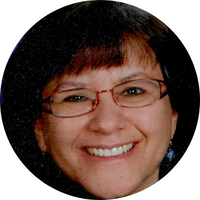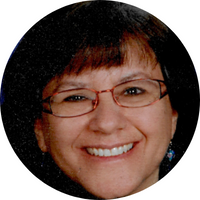
Part of your work at Cresset Software and Discovery is to participate in client conference calls and meetings – pre, during, and post project. What impact have Covid-based remote working and travel restrictions had on this aspect of your job?
Surprisingly Covid-based remote working has had very little impact on my current position. Although prior to Covid, I did occasionally travel and meet with clients and coworkers in person, my work was largely performed virtually and remotely. Computational chemistry and modeling lends itself to being performed remotely since all the work and products can be shared digitally. So, I was largely using Teams, Zoom, and GotoMeeting and accustomed to doing so well before the rest of the world .
However, I believe now, due to Covid, companies and individuals have become more aware of some of the potential advantages of remote/virtual work. Workers who formerly had long commutes become more productive when commuting time is eliminated. Additionally, for those who have small children and often have childcare issues, remote works offers more flexibility. It also offers the opportunity for companies to recruit talent with specific skills without requiring relocation.
When you reflect on how Covid vaccines were so quickly developed and produced, what implications do you see for future drug development?
There are primarily two reasons why Covid vaccines were so expediently developed. One was the rapid sharing of viral genomic sequencing information around the world. Learning from this example going forward, I think there will be more sharing of noncompetitive scientific data, techniques, and information. This was already a trend prior to Covid with pharma support for organizations like the Pistoia Alliance, Open Targets Consortium, and in the area of computational chemistry the Open Force Field Initiative.
The other is the streamlining of the approval process through the FDA. Hopefully lessons have been learned that will be carried forward in the future for the approval process for future drugs and vaccines.
Look into your crystal ball for a moment. Ten years from now, which disease or condition will be most greatly impacted by the introduction of new therapeutics?
I believe cancer will be the disease most greatly impacted through the introduction of new therapeutics. We are already seeing this with the understanding of DNA repair pathways and the introduction of PARP and Pol theta inhibitors, which are impacting breast and ovarian cancer treatment. The introduction of KRAS inhibitors will have a tremendous impact on the treatment of many cancer malignancies going forward. With the lower cost of genomic sequencing and increased understanding of cellular pathways, more directed and effective cancer therapeutics will be possible. Techniques such as cryo-EM will facilitate structure-based drug design combined with target pathway information.
Is it more difficult to discover a commercially successful drug today or 20 years ago?
Today, the structures of many drug targets have been experimentally solved, which enables structure-based drug design. It is relatively recently that many GPCR structures have become available--it is estimated that 35% of approved drug targets are GPCRs. Additionally, cryo-electron microscopy (cryo-EM) has begun to have an impact on drug discovery as the resolution of solved structures has improved due to improved detectors and computational analysis. So, it is now possible to solve the structures of large macromolecular assemblies and structures that cannot be solved by X-ray crystallography. Relatively recently, the structures of many other transmembrane protein targets have been solved as well.
The application of machine learning and artificial intelligence algorithms have facilitated the prediction of the structure of protein targets and protein-protein interaction targets more effectively (as in the case of AlphaFold and RoseTTA Fold).Recent enhancements in computational methods and resources have made high throughput virtual screening of huge ligand libraries possible.
New methods designing drugs that target protein-protein interactions, fragment-based ligand design, and the application of machine learning as well as the design of PROTACS (proteolysis targeting chimeras) and molecular glues have all had a major impact on and facilitated successful drug design.
Talk about the metaphorical “one that got away”. Is there a project that eluded you? Why? And if you could return to it, what would you do differently?
Most of the projects that eluded me from the past were trying to create homology models for proteins for which there was insufficient information available. Now there are so many new techniques to apply and so many more structures available to use as a reference it would be easier to have success with some of these projects.
You have worked in academia, industry, and government. To the degree you can generalize, how would you assess the work cultures in each of the sectors?
The major work environment differences in academia, industry, and government is in what determines the freedom you have in the topic of your research. In academia, the limitation is based on securing grant funding. Many mistakenly think that academic research is the ultimate freedom. However, There are calls for grant funding by agencies in certain specific topical areas, and it can be challenging to obtain external grants in certain research areas. The inability to secure external grant funding will severely limit your ability to purchase supplies and equipment to do research.
In industry, often the market profitability or timeliness of the research topic can determine your research. A company may focus research on the central nervous system (CNS), and then some side effects emerge., Or a competitor files a patent or releases a similar drug and management may determine to halt research in the CNS area and you must apply your skills in a different target area or lose your position entirely.
Research at a major government research lab is the most stable and has the most long-term research focus. Although even in a government lab, your research will be subject to external review periodically. Also, government labs are funded by Congress and the importance of topical focus can switch and funding levels change.
Aside from funding, the biggest difference is time for research projects. Academic and government research (except for during a pandemic) are usually longer term in time scope. Industrial research usually has more stringent time restraints.
As for work culture, academics (with tenure) and government research lab workers usually stay in the same positions for extended periods of time. Industrial researchers usually change positions within the same company or change companies more frequently.
If you had to break it out in rough percentages, how much of your career success do you owe to (a) your formal academic schooling, (b) the professional training provided by your employer, and (c) general “on the job” experience?
If I had to break it out in terms of percentages, I would say I owe 30% of my success to my formal academic schooling, 10% to professional training, and 60% to general on the job experience. Schooling and educational background provides you with the basis and the tools to do research. You acquire the ability to read and research new techniques, tools, and the information you will need to continue in your field. Many of the significant techniques and methods that are being applied today did not even exist when I was in school. To stay relevant and to continue to play a role in any field in chemistry research you need to stay motivated to read and find ways to learn and stay current.
What’s the one career achievement you are most proud of?
Finishing my PhD thesis, which propelled me on this life’s journey. Graduate school can be very difficult and discouraging, but if I had not motivated myself to complete my degree, I would have never been able to be a participant along this path.
What have you done recently to improve some aspect of yourself?
Learned from those much younger than myself … students and postdoctoral fellows who have gone to school more recently and done research on some newer developed and applied techniques. It is important to always continue to learn.
Among everyone in the world, who would be on your three-person personal Board of Directors, if their participation was yours for the asking?
Frances Arnold,
Francis Collins,
Katalin Kariko and Drew Weissman
What’s a place you can’t wait to go back to?
An ACS meeting reception where I could freely and safely mingle, talk, and shake hands in a group of people indoors, unmasked.

Rachelle J. Bienstock is currently senior discovery scientist with Cresset, a computational chemistry and molecular modelling software and contract research company.
She received her BChE in chemical engineering from the Cooper Union School of Engineering (New York City) and her PhD in chemistry from the University of Michigan, Ann Arbor. After completing graduate school, she worked briefly in industry, in the materials science laboratory of Texas Instruments, followed by a Welch Research Fellowship at the University of Texas Southwestern Medical Center, in Dallas.
She worked as a research computational chemist and molecular modeler contractor in the Laboratory of Structural Biology at the National Institute of Environmental Health Sciences, an NIH laboratory. She also served as adjunct chemistry faculty at Meredith College, and as a visiting researcher at North Carolina State University.
Rachelle has been active in ACS, serving as Division of Chemical Information (CINF) chair, CINF program chair, member of ACS Committee for Chemical Abstracts, and is currently a member of the ACS Ethics Committee and alternate CINF councillor. She also continues to be engaged and involved with the CINF Programming Committee. Professionally, her research interests include cheminformatics as well as computational and structure-based drug design methods.
This article has been edited for length and clarity. The opinions expressed in this article are the author's own and do not necessarily reflect the view of their employer or the American Chemical Society.














